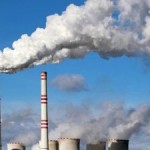Reducing Emissions from Biomass Burning
In the area of biomass burning, the report notes that N2O emissions from landscape fires can be achieved by reducing the use of fires for forest clearing and implementing prescribed burning to reduce the amount of burnable vegetation in natural fires. Improving the fuel and combustion efficiency of stoves can reduce emissions from biomass-burning in household stoves.
Wastewater and Aquaculture
Interventions in the collection and treatment of wastewater can reduce N2O emissions to the atmosphere. These include, in particular, lowering the nitrogen content of discharge wastewater through improved wastewater treatment, reducing wastewater leakage from sewage piping, and recycling nutrients in wastewater as fertilizer.
Emissions from aquaculture can be lowered by boosting overall nitrogen use efficiency, and by implementing fish farming systems that reduce the amount of waste generated, or by treating effluents from fish ponds.
N2O Mitigation Scenarios
The report assesses different sets of scenarios that correspond to different levels of potential N2O mitigation:
- Under the business-as-usual scenarios, with little or no mitigation, levels of N2O could increase on average by 83 per cent between 2005 and 2050;
- The moderate mitigation scenarios have emissions that increase but more slowly than business-as-usual. Under these scenarios, levels of N2O could increase on the average by 26 per cent between 2005 and 2050;
- Under the concerted mitigation scenarios, N2O emission levels could be 22 per cent lower in 2050 than in 2005.
A reduction in N2O levels, as seen in the concerted mitigation scenarios, will not only help to protect the ozone layer and bring climate benefits, but also have many other co-benefits.
Reducing N2O Emissions will Help Protect Ozone Layer
Rising levels of N2O may undermine the gains in ozone layer recovery achieved by drawing down CFCs and other ozone-depleting substances. Reducing emissions will help avoid the continued depletion of the ozone layer and secure the gains made by the Montreal Protocol.
Emissions to be avoided by the concerted mitigation scenarios between 2013 and 2050 are of comparable magnitude to the 1550 to 2350 kilotonnes of ozone depletion potential of CFCs estimated to be locked up in the stocks of old refrigerators, air conditioners, insulation foams, and other units that have already been manufactured and used, but not yet released to the atmosphere.
Climate Benefits
According to the UNEP Emissions Gap Report 2013, there will be an “emissions gap” of around 8 to 12 gigatonnes of CO2 equivalent (GtCO2eq) in 2020. Drawing down N2O can make a significant contribution to narrowing this gap. The potential to reduce N2O emissions in 2020 is around 1.8 Tg N2O-N/yr. In units of equivalent CO2 emissions, this is about 0.8 GtCO2eq/yr, which is around 8 per cent of the emissions gap.
Moreover, continued N2O emissions will worsen anthropogenic climate change and the effects will persist for a century or longer even when emissions are reduced in the future.
Overcoming Barriers
Cost, capacity building, technology transfer, and the lack of know-how are among the barriers to implementing N2O reduction strategies at a global scale.
Possible actions to overcome such barriers involve a combination of regulatory, financial and voluntary approaches. These include:
- Removing subsidies that encourage the overuse or misuse of nitrogen fertilizer and other products, while providing incentives for adopting best management practices that would improve nitrogen use efficiency;
- Putting a price tag on nitrogen pollution through appropriate levies, incentives and tradable permits;
- Encouraging research and development geared towards the development of innovative techniques to enhance nitrogen use efficiency as well as increased crop and animal productivity in agriculture and other sectors;
- Increasing support for good nutrient management practices in crop and livestock operations through education, extension and outreach, especially to farmers in developing countries;
- Setting clear targets for N2O emissions reduction and for improving nitrogen use efficiency, and putting in place strategies for tracking progress.
The report also points to opportunities for embedding needed N2O mitigation policies into existing international treaties and institutions. Such opportunities include:
- United Nations Framework Convention on Climate Change – N2O emissions from nitric and adipic acid production are already being addressed under the Clean Development Mechanism of the Convention, but attention could be given to agriculture and other sectors responsible for the vast majority of N2O emissions;














